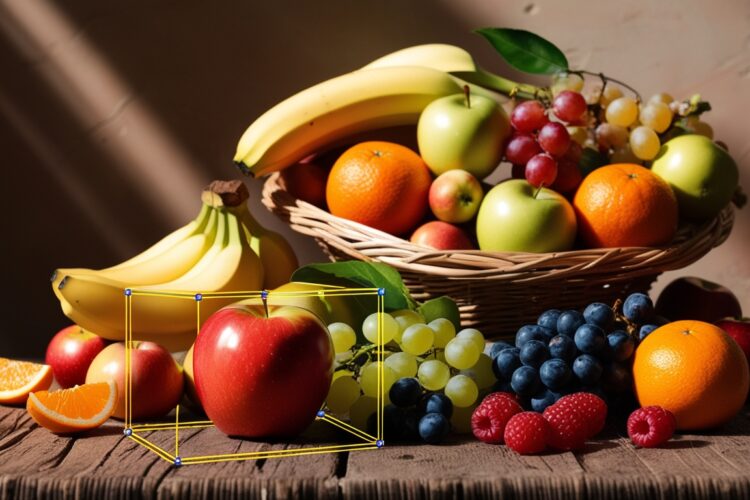Fruit Ripeness Detection with Computer Vision and Data Labeling
Fruit Ripeness Detection with Computer Vision and Data Labeling
In the era of artificial intelligence and automation, computer vision has emerged as a game-changer in the agricultural industry. One of its most promising applications is fruit ripeness detection, which ensures quality control, reduces food waste, and enhances efficiency in supply chains. By leveraging data labeling techniques, AI models can accurately classify fruits based on their ripeness levels, benefiting farmers, retailers, and consumers alike.
The Role of Computer Vision in Fruit Ripeness Detection
Computer vision enables machines to analyze images of fruits and determine their ripeness by extracting features such as color, texture, shape, and size. AI models trained with labeled datasets can classify fruits into categories like unripe, ripe, and overripe, helping automate sorting and grading processes in agricultural production.
Key techniques used in fruit ripeness detection include:
- Color Analysis: Ripeness is often indicated by changes in fruit color. For example, bananas transition from green to yellow, while tomatoes shift from green to red.
- Texture Recognition: The surface texture of fruits changes as they ripen, becoming softer and sometimes wrinkled.
- Shape and Size Detection: Some fruits expand as they ripen, and subtle changes in shape can be indicators of ripeness.
- Deep Learning Models: Convolutional Neural Networks (CNNs) are widely used for image classification tasks, enabling accurate ripeness detection.
- Hyperspectral Imaging: This advanced technique captures spectral information beyond visible light, allowing detailed ripeness analysis based on chemical composition changes.
The Importance of Data Labeling in AI Training
For AI models to accurately classify fruit ripeness, they require high-quality labeled data. Data labeling involves annotating images of fruits with corresponding ripeness levels to train machine learning algorithms. The success of an AI-based ripeness detection system depends on precise and consistent annotations.
Types of Data Labeling for Fruit Ripeness Detection
- Image Classification: Labeling images into categories like unripe, ripe, or overripe.
- Object Detection: Identifying and locating multiple fruits in an image.
- Semantic Segmentation: Assigning each pixel in an image to a ripeness level for detailed analysis.
- Instance Segmentation: Differentiating multiple fruits in the same image and labeling their ripeness individually.
- Bounding Box Annotation: Marking fruit locations within images to help models learn spatial features.
Challenges in Fruit Ripeness Detection
While computer vision and data labeling significantly improve accuracy, some challenges still exist:
- Variability in Fruit Appearance: Differences in lighting, background, and fruit variety can affect model performance.
- Complex Ripening Patterns: Some fruits exhibit uneven ripening, making classification harder.
- Large-Scale Data Collection: A vast dataset with diverse fruit samples is required to train AI models effectively.
- Generalization Across Environments: AI models must adapt to different farming conditions, packaging, and market scenarios.
The Future of AI in Agriculture
Advancements in AI, machine learning, and data annotation are continuously refining fruit ripeness detection systems. Integrating robotic harvesting systems with computer vision can further automate fruit selection, improving efficiency in farming and reducing post-harvest losses.
Additionally, blockchain technology combined with AI can improve traceability, ensuring consumers receive fresh and high-quality produce by tracking ripeness levels from farm to shelf.
How Outline Media Solutions Can Help
At Outline Media Solutions, we specialize in high-quality data annotation services for AI applications, including fruit ripeness detection. Our expertise in image classification, object detection, and segmentation ensures that your AI models receive the best-labeled data for accurate predictions.
We offer:
- Precise and scalable data annotation solutions for fruit classification.
- Customized datasets tailored for agricultural AI models.
- Fast turnaround time with expert human-in-the-loop annotation services.
Whether you are developing an AI-driven agricultural system or improving food quality control, our data labeling services provide the foundation for a reliable and scalable solution.
Conclusion
Computer vision and data labeling are transforming agriculture by enabling precise and automated fruit ripeness detection. With the right data, AI models can help optimize supply chains, minimize waste, and ensure high-quality produce for consumers.
If you are looking for expert data annotation services, Outline Media Solutions is here to help. Contact us today to power your AI solutions with accurate and efficient data labeling.



